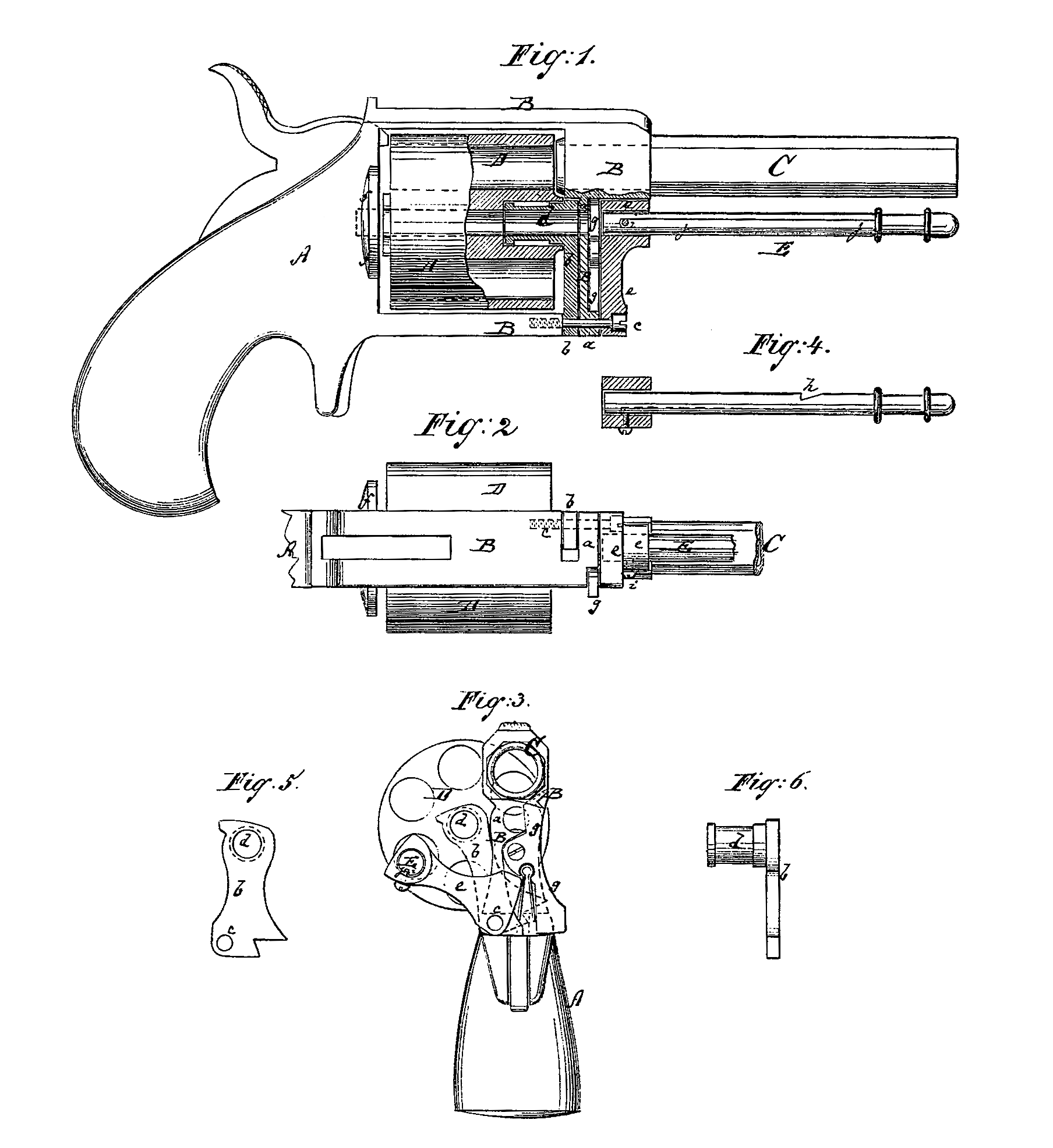US 113053
Be it known that I, SAMUEL S. HoPKINS,
of Norwich, in the county of New London and
Stateof Connecticut, have invented a new and
useful Improvement in Revolving Fire-Arms;
and I do hereby declare that the following is
afull,clear,andexactdescriptionthereof,which
will enable othersskilled inthe art to make and
usethesame,reference being had totheaccom
cation. panying drawing, forming part ofthis – specifi
Figure 1 represents a side view, partly in
section, of my improved fire-arm. Fig. 2 is a
detailinverted plan view ofthe cylinder-frame.
Fig.3 is afront-endview of the fire-arm. Fig.
4 isa detailside view ofthe base-pin and pivot.
Fig. 5 is a detail side view of the swinging
tail linkedge whichview holds ofthe the cylinder. same. Fig. 6 is a de
Sponding Similarparts. letters of reference indicate corresponding parts.
My invention relates to revolvingfire-arms,
and will be first described in connection with
all that is necessary to a full understanding
thereof, claims. and then clearly pointed out in the
Against the inner face ofthe frontbar, a, of
the frame Bis placed a swingingplateorlink,
b, which is pivoted at its lowerend by a pin, C,
to the frame, as shown. The cylinder Dof the
fire-arm is hung upon a tubular projection, d,
of the link b, the bore of the tube extending
entirely through the plateb, asshown in Fig.1.
That portion of the bore of the cylinder D
which receives the tube d is enlarged to such
an extent that the remaining portion will be
equal in diameter with the opening through
the tube d, as is also shown in Fig. 1.
E is the base-pin. It is fitted through the
front bar, a, and through a link, e, pivoted to
the face of the same, and is in line with the
axis of the cylinder D and tube d when the
arm is in a firing position. In this position
the base-pin can be pushed through the tube
d and cylinder D into a socket provided in
the recoil-shieldf,said socket being indicated
by dotted lines in Fig. 1. The cylinder, dur
ing the process of firing, will thus revolve on
and be in part supported by the base-pin, but
and alsosteady by thein tube action. d, being thus securely held

